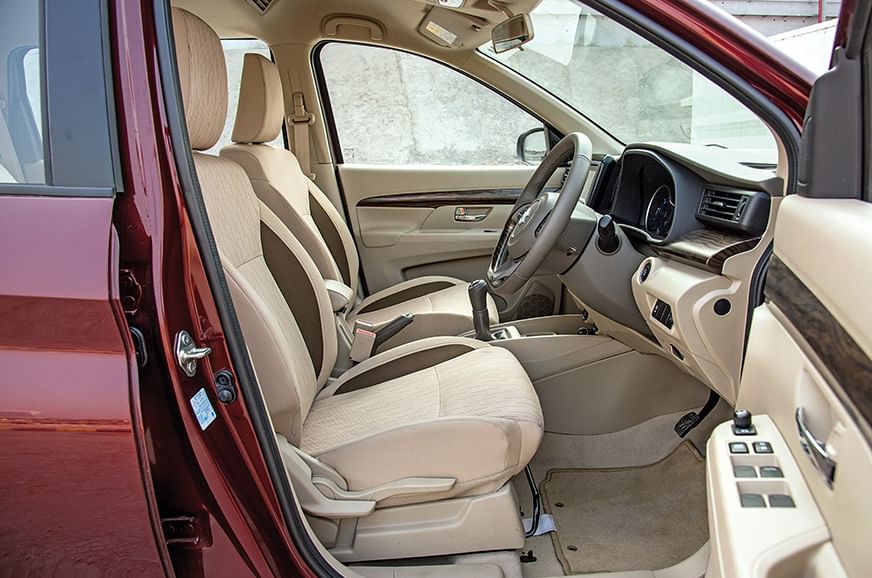2019 Maruti Suzuki Ertiga review, road test
This second generation is also a versatile and a value-for-money package. But how much better is it than the previous Ertiga?
Published on Feb 27, 2019 06:00:00 AM
1,84,598 Views
The older Ertiga’s interiors were functional and rather drab, but the new one takes a huge leap forward in terms of design and quality. There are Audi-like air vents running the breadth of the dashboard, along with the artificial wood trim – both of which feel like imitations – but these somehow seem to up the cabin’s upmarket quotient. Even the free-standing touchscreen and the flat-bottom steering blend in nicely with the other design elements. Plastics in the cabin are hard but quality for the most part is a big step up. A lot of switchgear is shared with modern Marutis and they feel nice, but many bits like the power window switches, cabin lamp and the flimsy bonnet opener have been carried forward from decade-old models.

The new Ertiga is very user-friendly when it comes to ingress-egress, with a tall stance and wide-opening doors, so passengers can simply walk into the car, without the need to crouch or climb in. The front seats are broad, supportive and the cushioning is spot on – full marks to Maruti when it comes to seat comfort. Even the seating position is very car-like, albeit a tall car, so drivers get a good view of the road ahead due to the high seating position and large expanses of glass all around. Storage areas are aplenty, and the air vents in the front cupholders are unique – these channel cool air from the air con directly to the beverages placed here. However, some areas like the glovebox and the armrest console are a bit too small.
Those seated in the middle can enjoy the view outside via the massive windows, which also flood the cabin with light. However, a sun-blind (like in the Marazzo) would have been a nice addition. The seat itself is very comfortable and supportive, and room here is huge with the seat slid all the way back. Headroom here isn’t a concern either and the seat even reclines to a very comfortable angle in a 40:60 ratio. The occasional third passenger here will be quite comfortable now thanks to an almost flat floor and a bit more shoulder room, which is a result of the car’s wider dimensions. To keep the passengers seated here cool, there’s a roof-mounted blower; and there’s also a 12V power socket in each row, however there should have been the more modern USB charging slots.
Getting into the third row isn’t as easy as in the other two rows, as the (kerb-side) middle-row seat slides ahead with the tug of a lever but doesn’t tumble forward, freeing up just enough room to duck-walk your way into this space. What’s surprising is that room here is adequate, much more than the car’s exterior dimensions suggest. The large windows and beige all around further accentuate its airiness. And then, the seats, although a bit low-set, are comfy, with a good amount of head and shoulder room on offer for two adults. Kneeroom too, is adequate, and the seat even reclines to a comfy angle; so adults can sit here on long drives without losing circulation in their legs. However, in the reclined position, their heads will brush against the roof. Conveniences for the last row include a large side armrest, bottle holders and one charging socket. At 209 litres, the boot is larger and more practical now, and it also gets a nifty storage area beneath the boot floor that can easily swallow a few laptop bags. Folding the last row gets you 550 litres, and folding the last two rows gives you 803 litres of cargo volume.
Related Videos
Copyright (c) Autocar India. All rights reserved.



